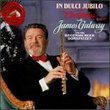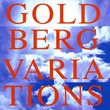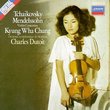| All Artists: Jon Leifs, Osmo Vänskä, Iceland Symphony Orchestra Title: Jón Leifs: Saga Symphony Members Wishing: 1 Total Copies: 0 Label: Bis Release Date: 10/24/1995 Album Type: Import Genre: Classical Styles: Historical Periods, Modern, 20th, & 21st Century, Symphonies Number of Discs: 1 SwapaCD Credits: 1 UPCs: 789368259724, 7318590007303 |
Search - Jon Leifs, Osmo Vänskä, Iceland Symphony Orchestra :: Jón Leifs: Saga Symphony
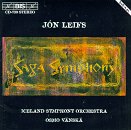 | Jon Leifs, Osmo Vänskä, Iceland Symphony Orchestra Jón Leifs: Saga Symphony Genre: Classical
Jon Leifs (1899-1968) had the unfortunate luck to be stuck living in Germany when World War II broke out. He continued to write and was, for some time after the war, branded a Nazi sympathizer because he hadn't "explaine... more » |
Larger Image |
CD DetailsSynopsis
Amazon.com Jon Leifs (1899-1968) had the unfortunate luck to be stuck living in Germany when World War II broke out. He continued to write and was, for some time after the war, branded a Nazi sympathizer because he hadn't "explained" himself well enough to the cultured public. Sinfonia 1 (Saga Symphony) of 1942 is a blistering response to that criticism. Based on medieval Icelandic sagas, the work--assertive and almost angry--pays homage to the true heroes in his life, the people who braved the North Atlantic and settled Iceland. The work sent the kind of shock waves Vaughan Williams's Symphony 4 did. Colossal work. --Paul Cook Similar CDs
Similarly Requested CDs
|
CD ReviewsSeventy-Six Great Lurs Led the Big Parade Thomas F. Bertonneau | Oswego, NY United States | 11/01/2000 (4 out of 5 stars) "One of the great individualists among 20th century artists, the Icelander Jón Leifs (1899-1968) persevered through critical hostility and audience incomprehension until, by the end of his life, his countrymen had acknowledged him as supreme among in giving musical expression to the native soul. Leifs' music does not fall easily on the ear, nor does it fail in demanding the fortitude of its auditors. The late cycle of tone-poems - "Geysir," "Hekla," and "Dettifoss" (all from the 1960s) - make the point in terms of orchestral dynamics; the earlier "Saga Symphony" (1941), written during the Leifs' Berlin period, just after a disastrous public performance of his Organ Concerto at the Prussian Academy of the Arts. (Goebbels banned further playing of Leifs' music and made additional threats against Leifs' wife, who was Jewish, and their daughters.) In this BIS recording, with Osmo Vänskä and the Iceland Symphony Orchestra, the "Saga Symphony" requires nearly an hour. In five movements, Leifs' "Symphony" offers musical character-portraits of seven important figures from the sagas: I. Skarphéðrinn; II. Guðrún Ósvífrsdóttir; III. Björn og Kári; IV. Glámr og Grettir; and V. þormóðr Kolbrúnarskáld. Leifs places in his orchestra genuine Icelandic instruments, most prominently a group of "lúrs," a brass horn, which color the texture in the Fifth Movement. The CD is the ideal medium for auditioning this work. Leifs makes no attempt at what we usually think of as symphonic development. His insistence on the gawky rhythms of the "rimúr" cam become tedious. Taken one at a time, however, the individual movements are fascinating, especially "þormóðr Kolbrúnarskáld," with its braying "lúrs" toward the end. It's definitely in the category of "offbeat repertory," but belongs in the library of anyone interested in the larger phenomenon of Scandinavian music." Stirring beyond words! Gary Spain | Los Angeles, CA United States | 09/28/2007 (5 out of 5 stars) "I listened to this masterpiece in its entirety last night on KUSC (in Los Angeles) and am purchasing it to demonstrate to my friends just how moving a piece of music can be. It is unlike any other I have ever heard, and I consider myself a connoisseur of modern music (having in recent years even matured to the point of being able to appreciate the better atonal works when I hear them, to which this however bears little resemblance). It is the OPPOSITE of minimalism (the successful modern attempt to pass off mere tape loops as music), but of course this would apply to any real masterpiece, wouldn't it. This work transported me to the Viking age, whose gods I revered as a child and still consider close comrades. Its deliberate, percussive, almost arhythmic (like actual battle) pace and occasional mournful, extremely lyrical interludes may fall somewhat short of a romantic evening, but if there is any warrior blood in the listener, and the listener is male (I cannot speak for women here), it WILL stir it. (According to the announcer, the score actually calls for beaten shields and 'tuned rocks'.) I believe, moreover, that it actually stirred me all the more because it was written by someone obviously not ashamed of his Germanic heritage who also had a Jewish wife, this because I myself am both a reverer of the ancient Germanic (and Keltic) warrior ethic, with its insistance on individual liberty, AND perhaps the most dedicated student of Jewish Kabbalah on the planet. To hear expressed a Germanicism NOT IN THE LEAST shot through with anti-Semitism IN ITSELF thrills my soul, and reminds me of what I discovered about the oldest sequence of Germanic runes (the Elder Futhark): their sequence directly demonstrates a knowledge of the three 'mother letters' of Kabbalah, and of their deeper meaning. I honestly believe this work has affected me more than my first (or any subsequent) hearing of Shosty's Fifth, or Barber's Tocata Festiva for Organ and Orchestra (which one never hears on radio, alas), or even Prokofiev's 2nd violin concerto played by Nathan Milstein, but these will at least tell the reader the kind of music this reviewer considers worthy." Music sounding like nothing else you've ever heard or will h G.D. | Norway | 06/08/2009 (5 out of 5 stars) "Jon Leifs highly original sound world wasn't always very well understood by his contemporaries, but given this excellently performed series of his music from BIS it is now ripe for reassessment. Indeed, this music sounds like nothing else with its enchanting, mesmerizing but primitivistic evocations of the forces of nature, of mystery and magic, smoldering power and shimmering beauty. The Saga Symphony is certainly a case in point. It contains its own highly personal sound-world, employing (as do several of Leifs' works) a battery of unusual instruments (this time anvils, Bronze Age horns, wooden drums, iron shields, differently sized rocks), used for stirring effect.
There is little conventional about the formal development of this symphony, depicting various characters from Norse literature (historical or half-historical), but this massive, powerful work has a rather effective structure of its own and contains some utterly magical material sounding just like absolutely nothing else. Highpoints include the extremely effective scherzo, rattling along with turbulent power in a manner that leaves the listener in awe, and the dark, almost frightening intermezzo ("Glamr and Grettir"). The performances are truly excellent and the players are more than able to whip up the primeval power as well as the various colors and temperaments impressively, and the sound quality is dynamic and vivid. Strongly recommended (although newcomers to the composer might be advised to start with the issue containing Geysir)." |

 Track Listings (5) - Disc #1
Track Listings (5) - Disc #1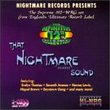




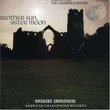
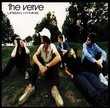
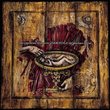
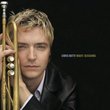

![Across The Universe [Deluxe Edition]](https://nationalbookswap.com/cd//m/51/1251/1241251.jpg)
